On a beautifully bright, yet crisply cold January morning, 27 participants gathered in the Douglas Fir Teaching Garden for a winter walk. We were honoured to have award-winning educator, Julia Alards-Tomalin, back again this year to share her knowledge about winter plant ID.
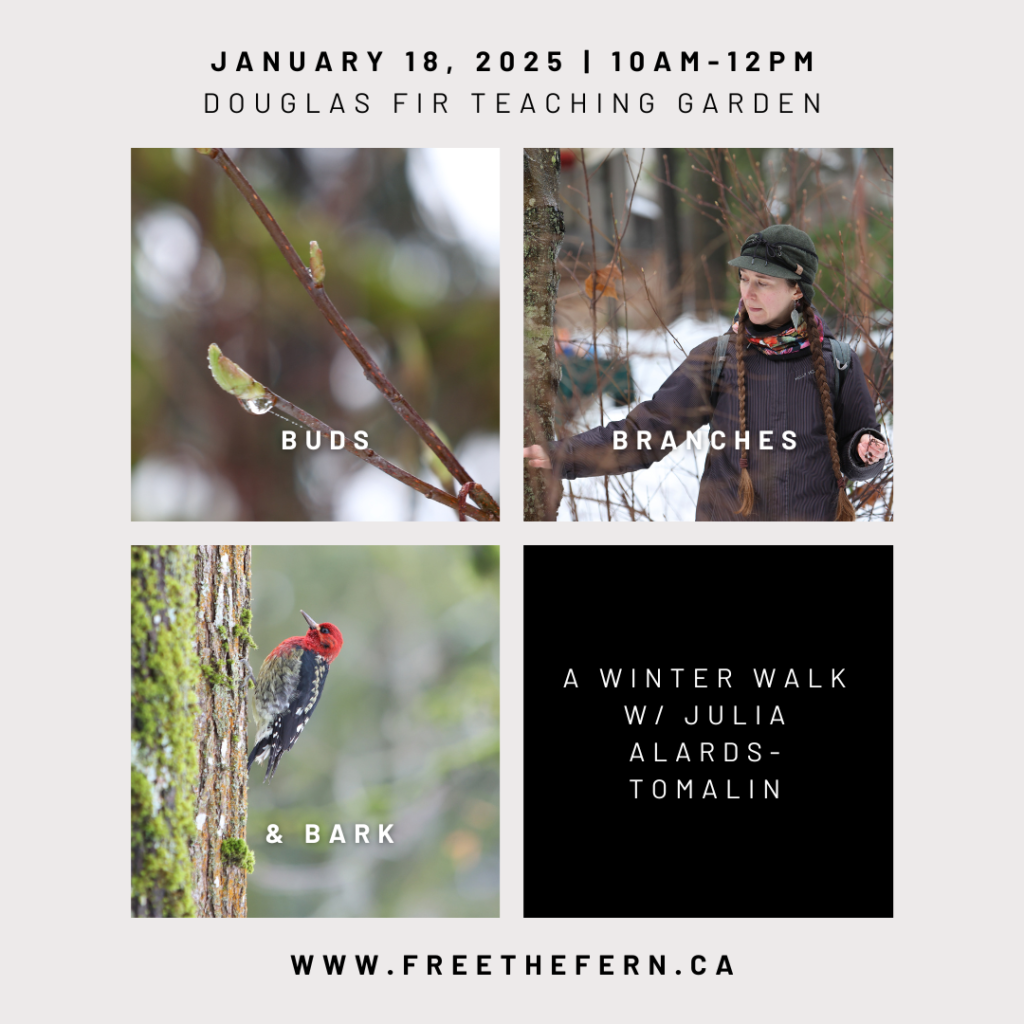
Julia Alard-Tomalin is Program Head in Forest and Natural Areas Management at BCIT School of Construction and the Environment. With the support of her students, Julia has created a free online resource on winter plant ID, Buds, Branches, & Bark.
Gathering in the garden, Free the Fern Executive Director, Grace Nombrado, welcomed everyone and offered a land acknowledgment, before introducing Julia.
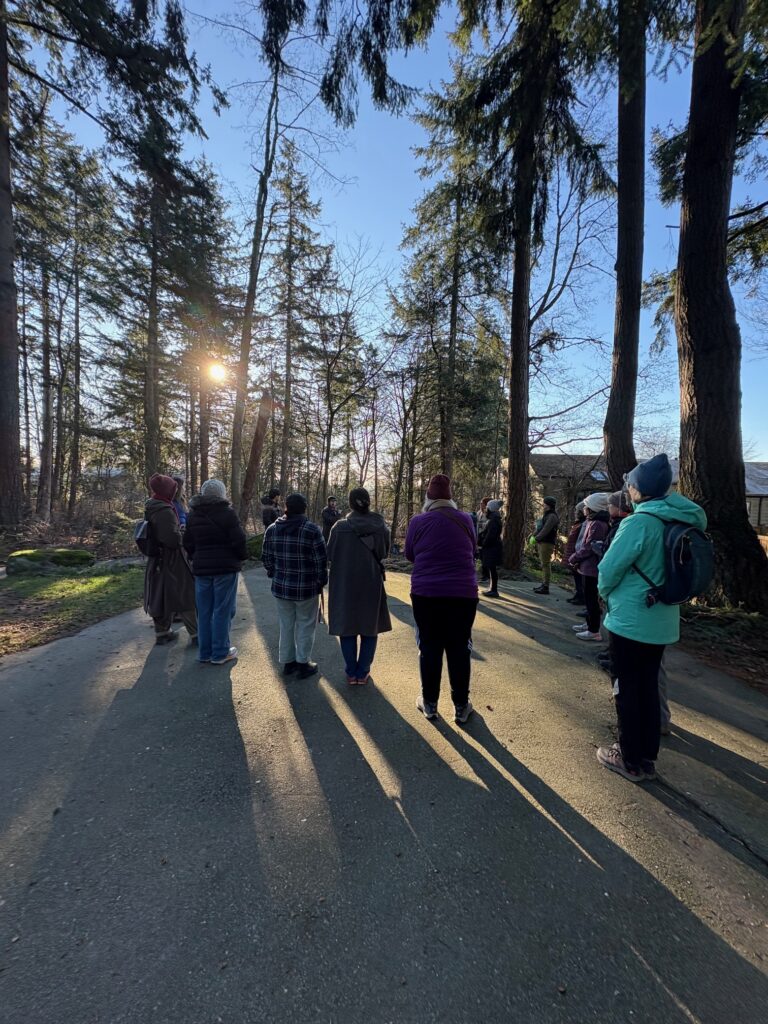
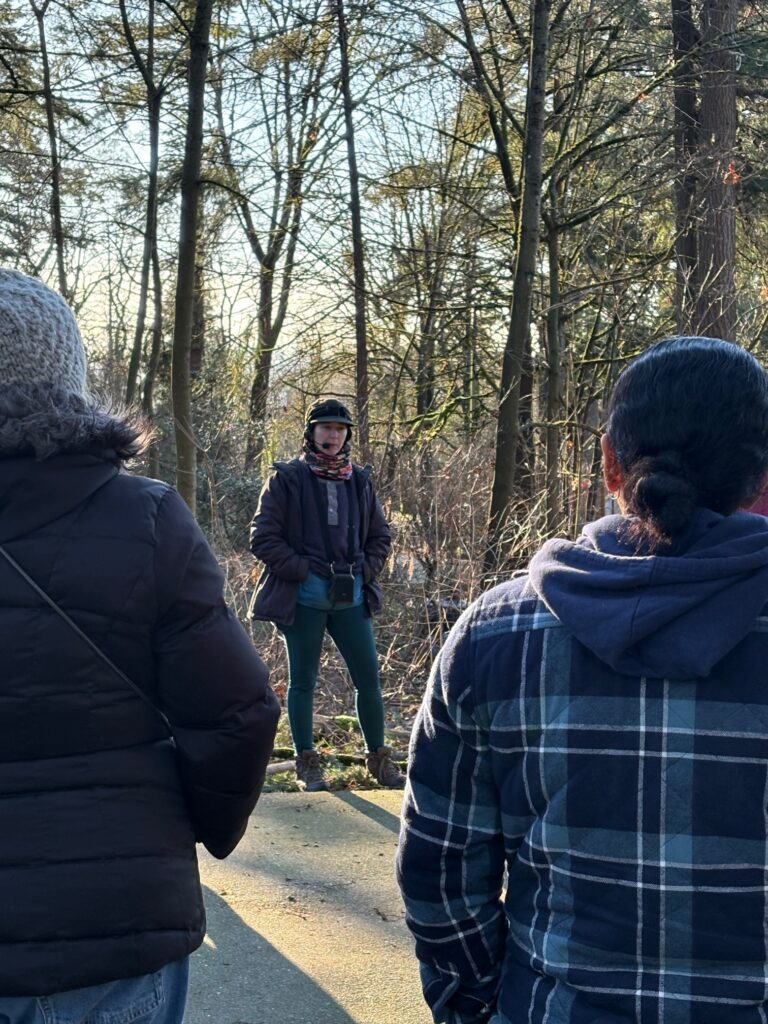
Julia began by sharing tips for identifying plants in the winter.
She advises that you should:
- step back and look at the whole plant
- look for leaves, branches, remnant fruit/seeds on the ground
- not rely on just one feature to make a plant ID
Julia has an extensive branch collection:
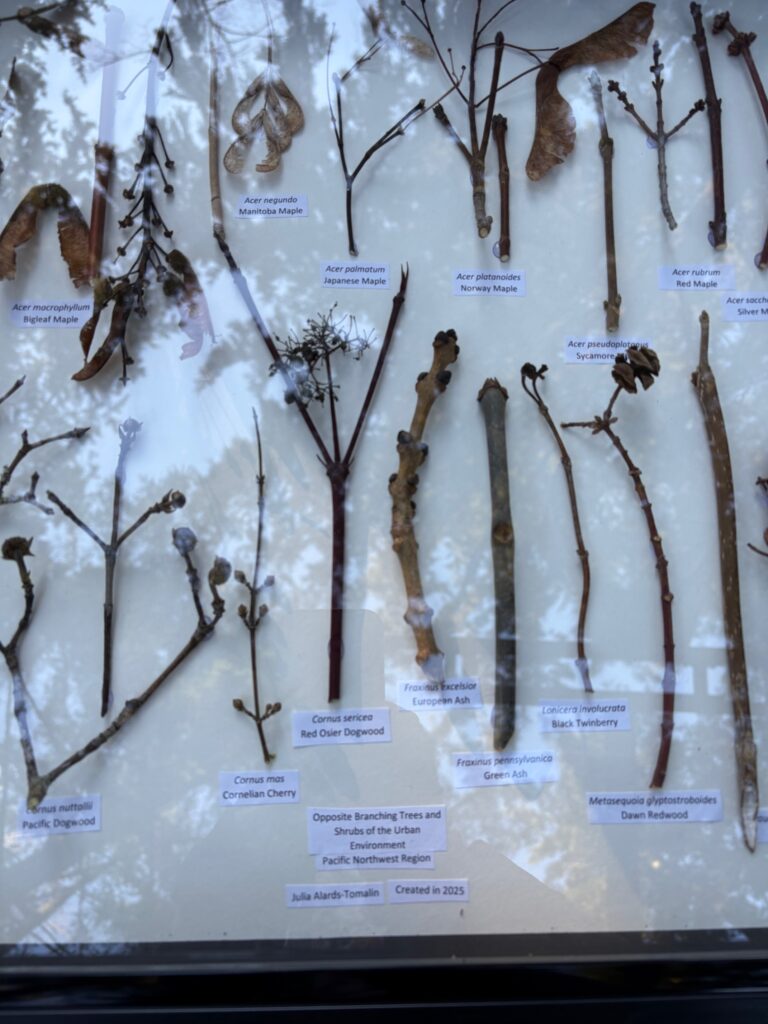
She also introduced the parts of a branch, including:
- Apical bud: top bud on the stem
- Lateral bud: bud(s) on the side of the stem
- Bud scale: outer scales on the bud that protect it in winter
- Bud scale scar: ring around the branch which marks the position of a bud last year
- Leaf scar: a curved scar on thes stem which marks the previous position of a leaf
- Vascular bundle scar: mark the postion of vessels that had connected the leaf before
- and more!
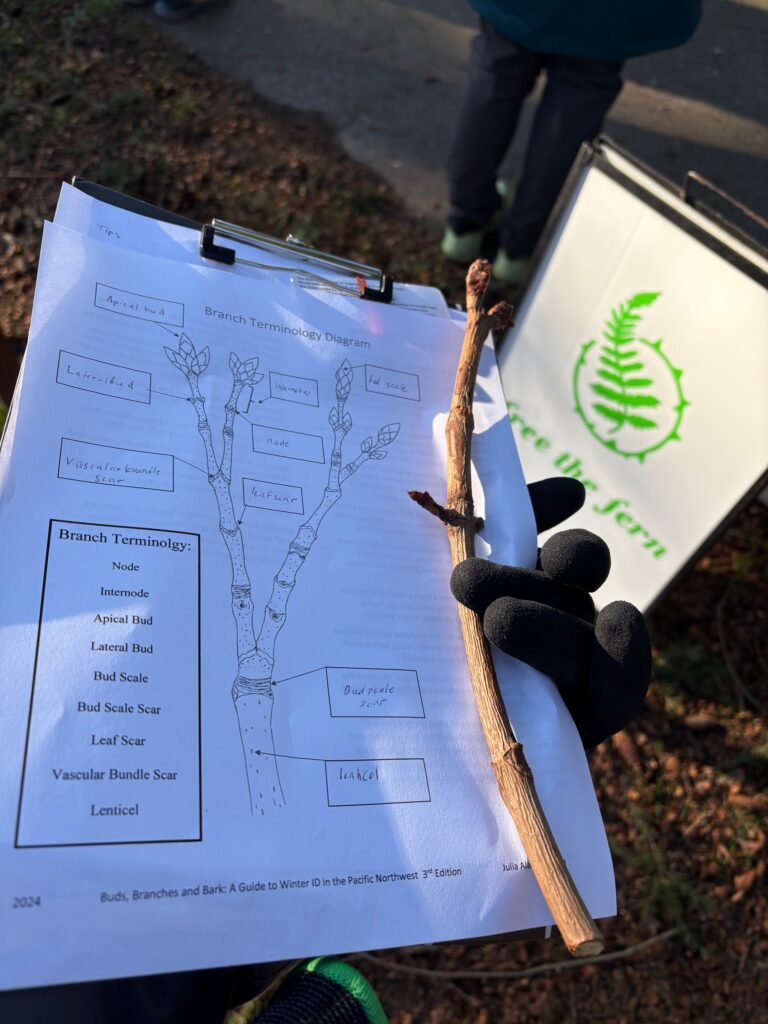
Julia passed out branches for everyone to hold and identify the parts of. Then, we each were invited to fill in a diagram, labeling all the parts.
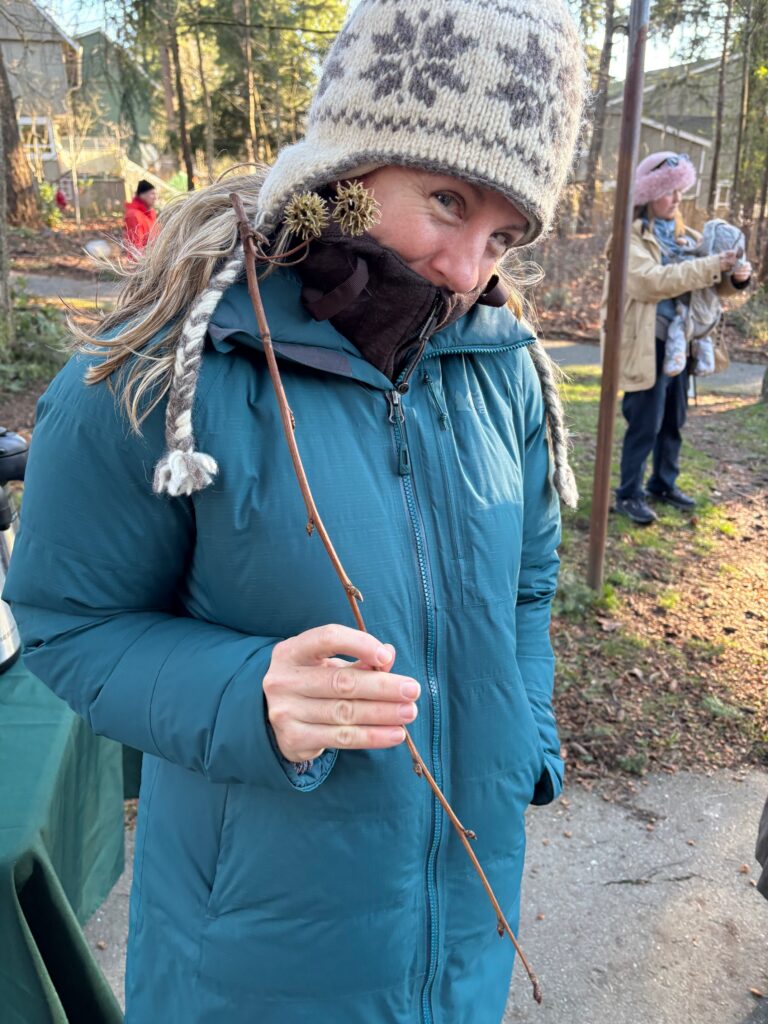
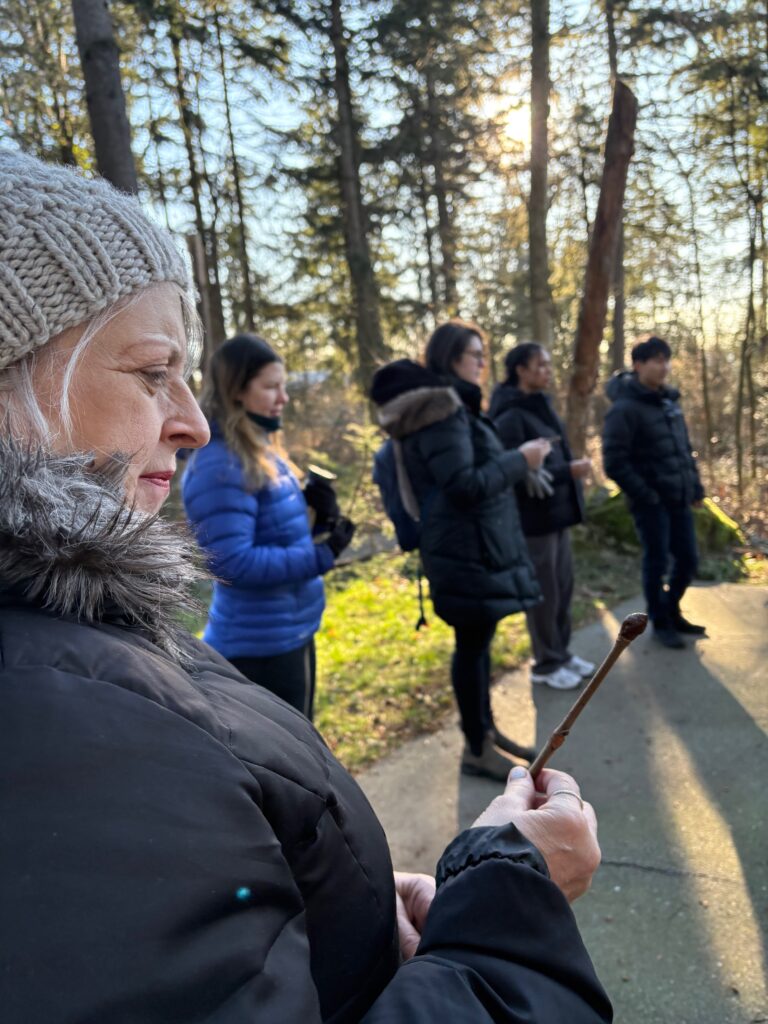
Some participants were beginning to feel cold, so Grace passed out fleece-lined winter garden gloves (which had been provided to us by the Green Streets Program with the City) and offered everyone hot chocolate and tea.
After some refreshments, Julia guided everyone down the Red Alder Trail for a walk.

Julia pointed out:
Big Leaf Maple
- seeds are released as “helicopters” (samara)
- samara grow in a v-shape and have a hairy appearance
- large leaves easily break down in the winter
- can make syrup out of its sap
- often covered in moss and licorice fern



Osoberry
- scrape the bark and you can smell cucumber
- inside it has a chambered (honeycomb-like) pith
- is one of the first native plants to flower in late winter
Red Flowering Currant
- stems tend to grow straight up
- red buds stand out
- blooms attract hummingbirds

Vine Maple
- has many curved branches
- is it a shrub or a tree?
- samara grow more straight across, rather than in a v-shape
- buds are split at the top, like a goat’s hoof
Oceanspray
- branches grow curving out like the waves of an ocean
- when in bloom it can create a beautiful tunnel of white blossoms
- holds onto its seeds all winter, providing a food source for birds
Thimbleberry
- stem grows in a zig-zag pattern, changing direction after each lateral bud
- stem has fine, soft hairs, unlike salmonberry, which has prickles


Trailing Blackberry
- vine has a white, waxy coating, called glaucous, that can be scraped off
Thank you to Julia for sharing her knowledge! Thank you to all the participants who came from across the Lower Mainland to join the walk. We are also grateful to Park People, for providing financial support for this walk.

